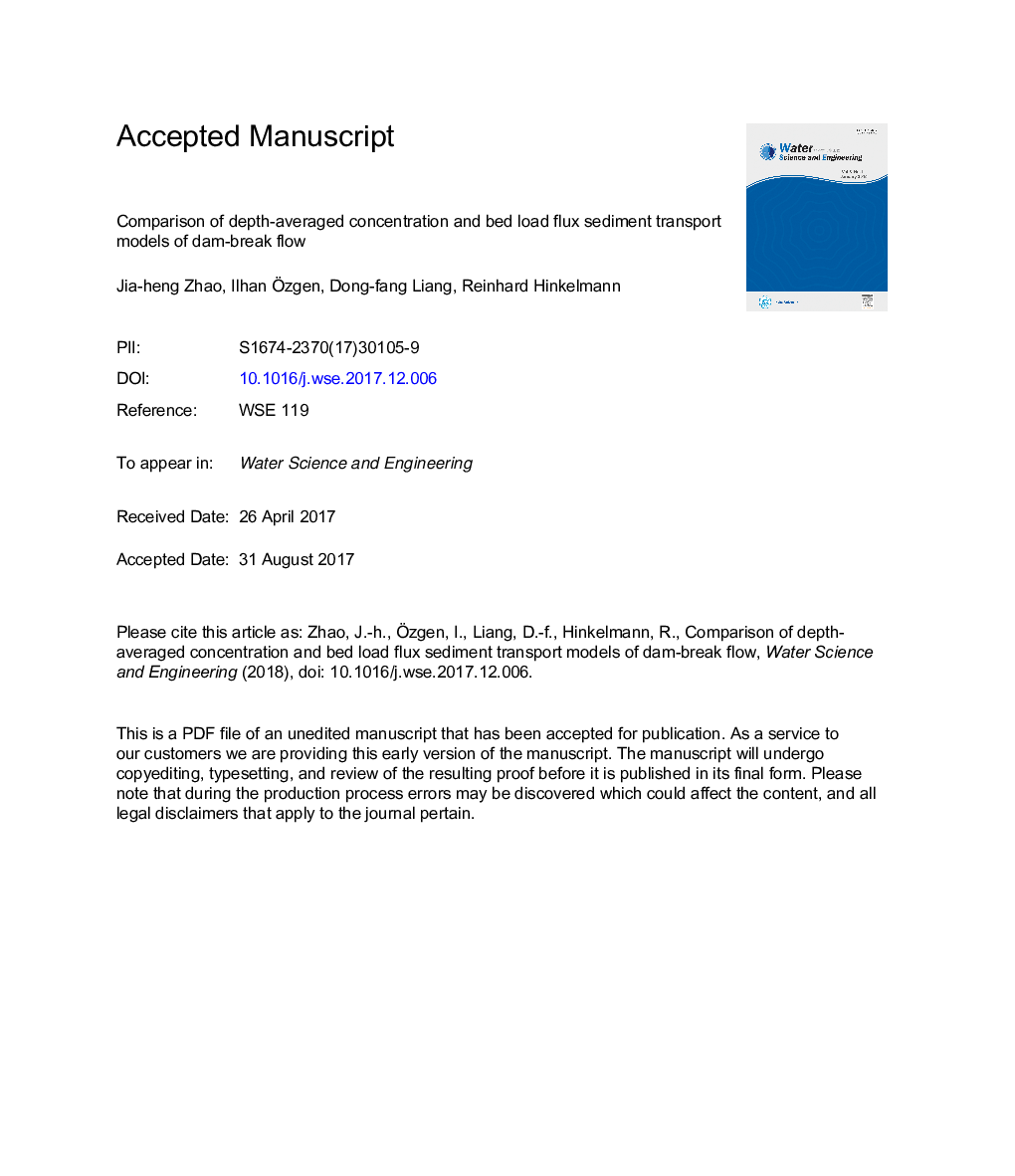| Article ID | Journal | Published Year | Pages | File Type |
|---|---|---|---|---|
| 6784554 | Water Science and Engineering | 2017 | 12 Pages |
Abstract
This paper presents numerical simulations of dam-break flow over a movable bed. Two different mathematical models were compared: a fully coupled formulation of shallow water equations with erosion and deposition terms (a depth-averaged concentration flux model), and shallow water equations with a fully coupled Exner equation (a bed load flux model). Both models were discretized using the cell-centered finite volume method, and a second-order Godunov-type scheme was used to solve the equations. The numerical flux was calculated using a Harten, Lax, and van Leer approximate Riemann solver with the contact wave restored (HLLC). A novel slope source term treatment that considers the density change was introduced to the depth-averaged concentration flux model to obtain higher-order accuracy. A source term that accounts for the sediment flux was added to the bed load flux model to reflect the influence of sediment movement on the momentum of the water. In a one-dimensional test case, a sensitivity study on different model parameters was carried out. For the depth-averaged concentration flux model, Manning's coefficient and sediment porosity values showed an almost linear relationship with the bottom change, and for the bed load flux model, the sediment porosity was identified as the most sensitive parameter. The capabilities and limitations of both model concepts are demonstrated in a benchmark experimental test case dealing with dam-break flow over variable bed topography.
Related Topics
Physical Sciences and Engineering
Engineering
Civil and Structural Engineering
Authors
Jia-heng Zhao, Ilhan Ãzgen, Dong-fang Liang, Reinhard Hinkelmann,
